In Q1 2025, New Zealand’s economy unexpectedly grew by 0.8%, surpassing the Reserve Bank’s forecast of 0.4%.
However, as illustrated below by Justin Fabo from Antipodean Macro, New Zealand’s GDP still declined by 0.7% year on year.
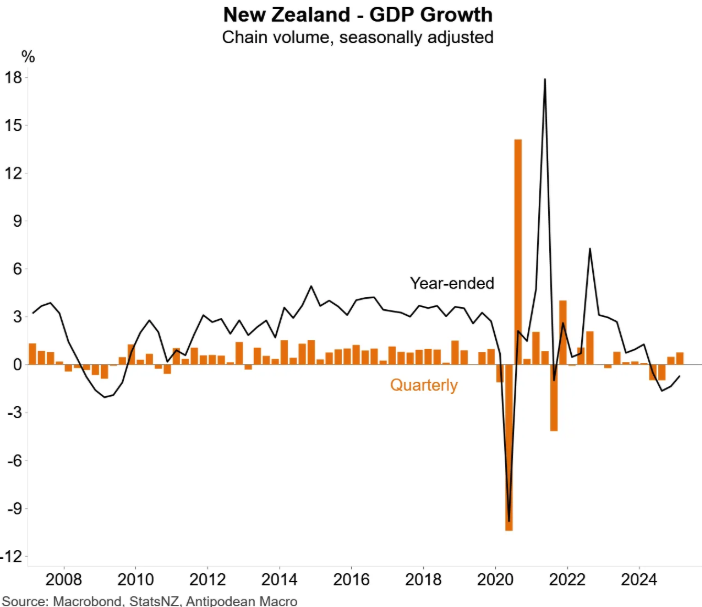
The Reserve Bank of New Zealand responded by keeping the official cash rate (OCR) on hold at 3.25% at this month’s monetary policy meeting. This hold decision followed six consecutive decisions of OCR cuts, totalling 225 bps.
OCR cuts are likely to recommence, however, given the Reserve Bank’s latest quarterly GDP nowcast has collapsed back into negative, plunging to -0.25% for Q2 2025.
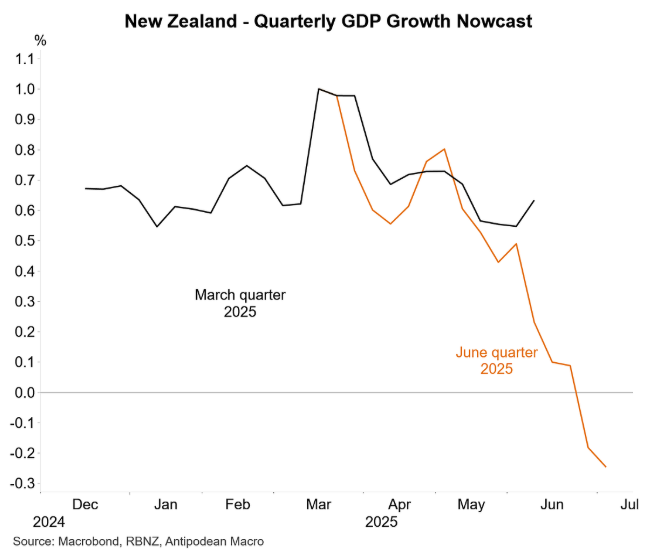
As illustrated below, the retail and consumption measures are especially weak, dragging down overall growth.
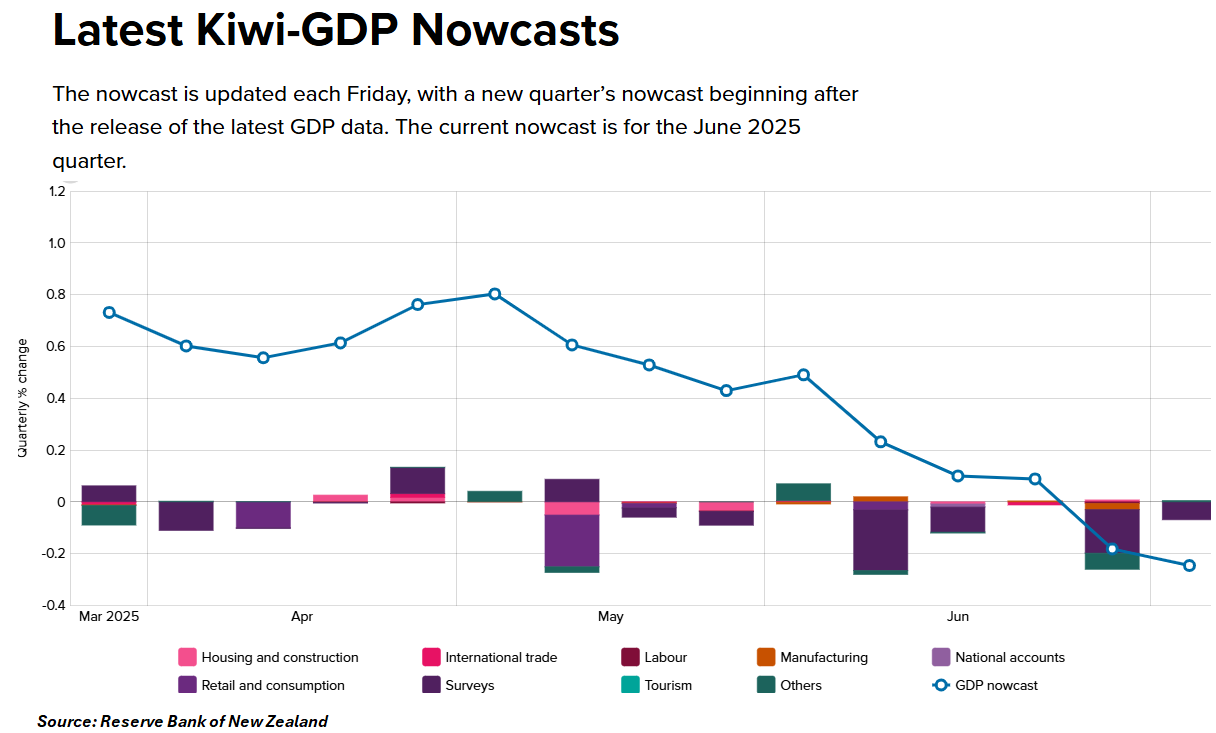
Indeed, as Justin Fabo shows below, over Q2, nominal spending in New Zealand using payment cards fell by 1.5% in total and by 0.3% on a ‘core’ retail basis.
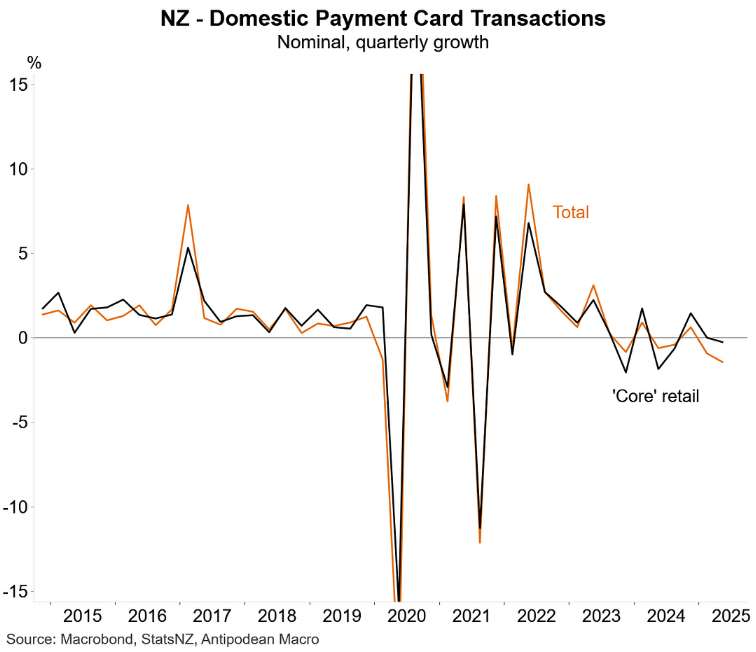
New Zealand’s labour market also remains on life support, with the composite PMI employment series pointing to declining jobs.
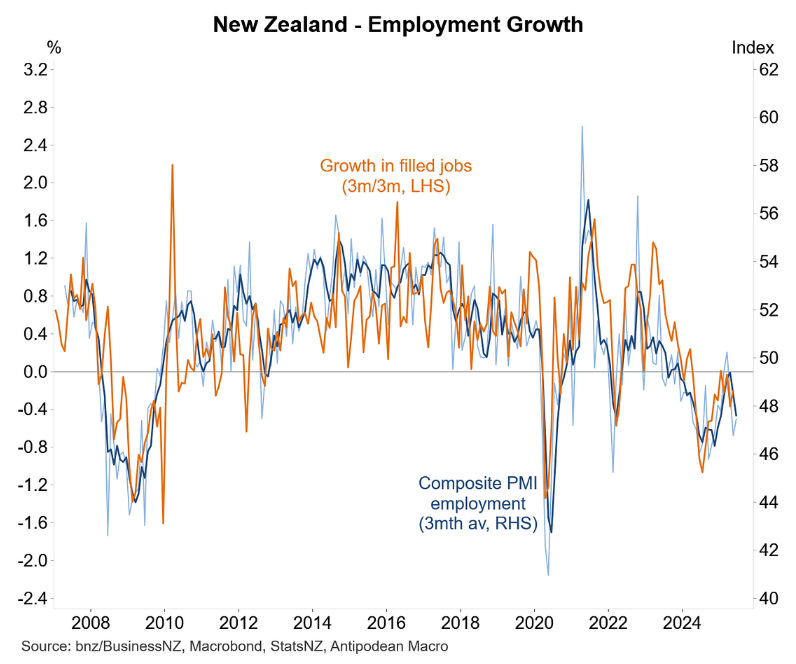
In other words, New Zealand’s economy remains recessionary, which suggests that the Reserve Bank will cut the OCR further over the year.
Major bank ASB believes that “a cautious, data- and event-dependent RBNZ will move the OCR lower”. It is tipping “a 25bp cut in August and a 3% OCR by year end”.
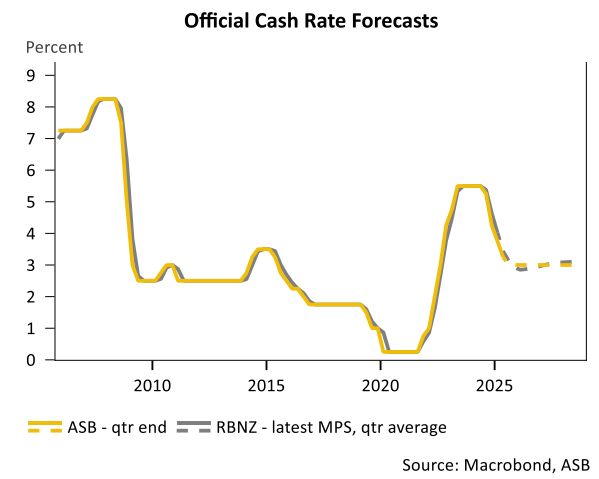
“We are aligned with the RBNZ view that a large margin of spare capacity and sluggish growth should be sufficient to deliver sub 3% inflation on a sustained basis”, ASB noted following the latest rates decision.
In a separate note delivered later, ASB noted that “further cooling in annual net immigration inflows to a 2½ year low, about half their historical average… look to be a major factor contributing to the sluggish pace of consumer demand and the housing market of late”.
As a result, “continued weakening in net immigration could see the RBNZ push the OCR lower”, given that “lower net immigration will weaken both the pace of economic activity and supply side capacity”.
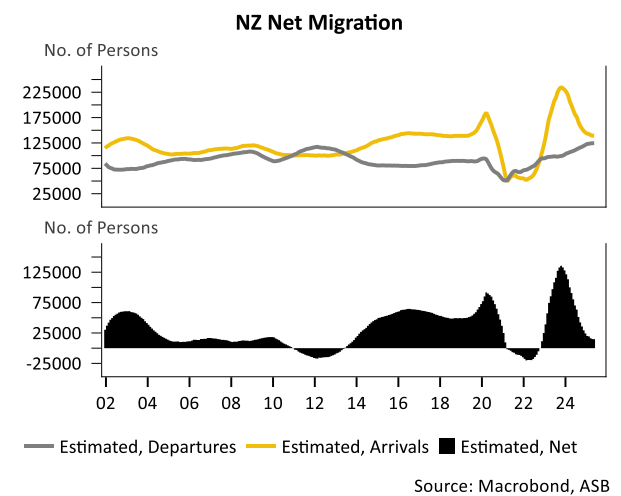
In short, interest rates in New Zealand are likely to fall further to aid the stalling economy.

